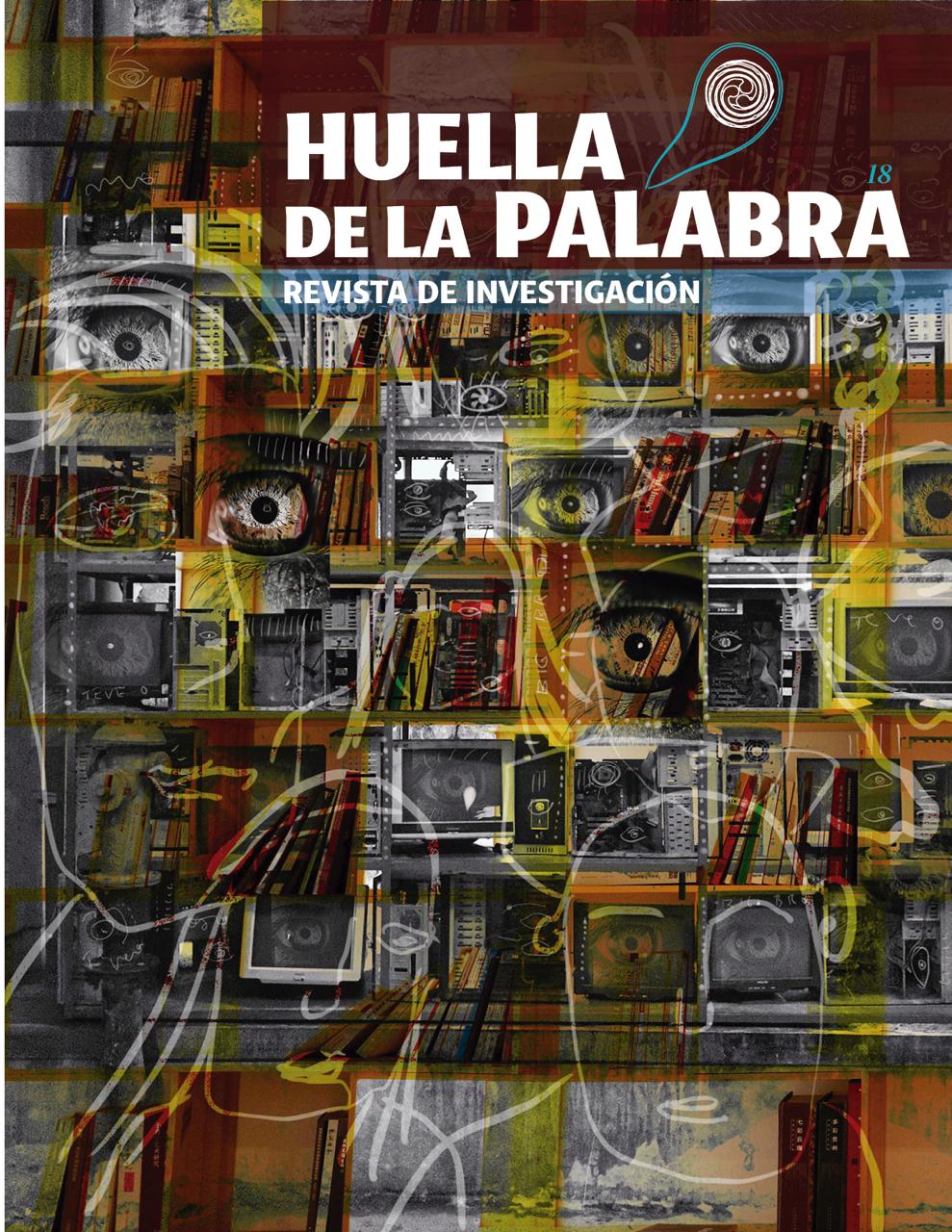How domestic violence impacts crime in Mexico
DOI:
https://doi.org/10.37646/huella.v18i18.632Keywords:
Domestic violence, Delinquency, Vulnerable populations, MexicoAbstract
The hypothesis of this research is based on the fact that if an individual suffers psychological, physical, economic or sexual abuse in childhood, when he or she grows up he or she will commit a crime. In other words, the damage caused to him or her is so great that it leads him or her to commit illegal acts and the offense is even greater when the violence exercised on him or her is by his or her parents or relatives who are supposed to be in charge and responsible for taking care of him or her and giving him or her everything necessary for optimal development. Now when he or she is in a state of poverty or his or her relatives have dedicated themselves to crime and he or she does not know any other world, it is much more difficult for the child to get out of this circle because it is the only thing he or she knows.
In this work, we will look at the essential concepts for understanding it, as well as statistical data, and we will touch on some authors who have studied the subject from the same perspective. The purpose that we try to convey is to raise awareness in readers so that they can act in case of seeing a situation of family violence and thus be able to stop the problem.
Downloads
References
Latorre, e. L. (2006). Ciencias de Seguridad de la Universidad de Salaanca. Obtenido de Psicología de la delincuencia: https://www.rediberoamericanadetrabajoconfamilias.org/psicologiadeladelincuencia.pdf
Cedillo, B. (6 de octubre de 2021). La importancia del entorno familiar para prevenir la violencia y la delincuencia. Obtenido de BID: https://blogs.iadb.org/seguridad-ciudadana/es/la-importancia-del-entorno-familiar-para-prevenir-la-violencia-y-la-delincuencia/
León, G. B. (2014). Violencia, Derechos Humanos y Seguridad Ciudadana. Obtenido de corteidh: https://www.corteidh.or.cr/tablas/30297.pdf
CONEVAL. (2020). MEDICIÓN DE LA POBREZA. Obtenido de CONEVAL: https://www.coneval.org.mx/Medicion/IRS/Paginas/Que-es-el-indice-de-rezago-social.aspx
COVER, A. S. (2021). NIÑAS, NIÑOS Y ADOLESCENTES RECLUTADOS POR LA DELINCUENCIA ORGA. Obtenido de REINSERTA.ORG: https://reinserta.org/wp-content/uploads/2021/12/ESTUDIO-RECLUTADOS-POR-LA-DELINCUENCIA-ORGANIZADA.pdf
Alpuche, D. S. (18 de mayo de 2021). La importancia de la familia. Obtenido de Entrale: https://entrale.org.mx/blog/2021/05/la-importancia-de-la-familia/
Echeburúa, E. (2015). Abuso de drogas y delincuencia: consideraciones para una valoración forense integral . Obtenido de https://www.adicciones.es/index.php/adicciones/article/view/790
García, A. K. (19 de junio de 2022). Las mujeres y los niños: los más olvidados e invisibles dentro de las cárceles en México. Obtenido de El economista: https://www.eleconomista.com.mx/politica/Las-mujeres-y-los-ninos-los-mas-olvidados-e-invisibles-dentro-de-las-carceles-en-Mexico-20220617-0083.html#:~:text=Al%20corte%20del%202021%2C%20casi,sus%20procesos%20de%20desarrollo%20infantil.
GUILLÉN, B. (2023). El país. Obtenido de POBREZA: https://elpais.com/mexico/2023-08-10/casi-nueve-millones-de-mexicanos-salen-de-la-pobreza-en-dos-anos.html
Healthwise. (1 de marzo de 2023). Etapas del desarrollo para niños . Obtenido de Healthwise: https://www.cigna.com/es-us/knowledge-center/hw/etapas-del-desarrollo-para-nios-de-5-aos-ue5316
Hidalgo, C. d. (9 de junio de 1990). Código Penal para el Estado de Hidalgo. Obtenido de http://www.congreso-hidalgo.gob.mx/biblioteca_legislativa/leyes_cintillo/Codigo%20Penal%20para%20el%20Estado%20de%20Hidalgo.pdf
Jimena Ocampo Lozano. (25 de noviembre de 2021). El impacto para el niño de crecer en un ambiente violento. Obtenido de Guia infantil: https://www.guiainfantil.com/articulos/educacion/abusos/el-impacto-para-el-nino-de-crecer-en-un-ambiente-violento/
Jiménez, M. (2016). Manual de prevención de violencia intrafamiliar. Obtenido de Democracia Familiar y Social AC: http://www.democratizacionfamiliar.com/wp-content/uploads/2014/04/Manual_para_la_prevencion_de_la_violencia_familiar_web.pdf
Jorge, L. (2016). La Violencia Intrafamiliar; sus efectos en el entorno familiar y social. Obtenido de CoPPA: https://coppaprevencion.org/la-violencia-intrafamiliar-sus-efectos-en-el-entorno-familiar-y-social/
Márkez, I. (2002). Violencia doméstica, consumo de sustancias y otras circunstancias concurrentes. ¿El derecho versus derecho a la salud? Obtenido de Investigación sobre Salud mental y Sustancias: https://scielo.isciii.es/scielo.php?script=sci_arttext&pid=S0211-57352002000300008
Maldonado, C. (14 de mayo de 2021). Dirección General de la Comunicación Social. Obtenido de https://www.dgcs.unam.mx/boletin/bdboletin/2021_414.html
Macfarland, C. A. (Agosto de 2017). Menores que viven con sus madres en centros penitenciarios: legislación en México. Obtenido de Cuaderno de Investigación Dirección General de Análisis Legislativo: http://bibliodigitalibd.senado.gob.mx/bitstream/handle/123456789/3665/Cuaderno%20de%20investigación%2034.pdf?sequence=1&isAllowed=y
mexico, C. N. (2019). INFORME ESPECIAL DE LA COMISIÓN NACIONAL DE LOS DERECHOS HUMANOS SOBRE LOS CENTROS DE TRATAMIENTO INTERNO PARA ADOLESCENTES QUE INFRINGEN LA LEY PENAL DE LA REPÚBLICA MEXICANA. Obtenido de CNDH MÉXICO: https://www.cndh.org.mx/sites/default/files/documentos/2019-05/ADOLESCENTES-INFORME-ESPECIAL-2019.pdf
México, C. N. (2022). CENTROS DE TRATAMIENTO PARA ADOLESCENTES. Obtenido de CNDH MÉXICO: https://informe.cndh.org.mx/menu.aspx?id=111
Olivares, A. (23 de mayo de 2023). ‘LA MONA’, LA DROGA DE LOS MÁS DESPOSEÍDOS. Obtenido de La querella digital: https://www.laquerelladigital.com/la-mona-la-droga-de-los-mas-desposeidos/
Pérez, E. G. (2003). La transmisión intergeneracional del maltrato físico infantil: estudio en dos generaciones. Obtenido de redalyc: https://www.redalyc.org/pdf/727/72715318.pdf
Pérez, M. (11 de agosto de 2023). El economista. Obtenido de Salen de la pobreza 5.4 millones: https://www.eleconomista.com.mx/politica/Salen-de-la-pobreza-5.4-millones-20230811-0006.html#:~:text=Entre%20el%202016%20y%202022,de%20Desarrollo%20Social%20(Coneval).
Ramírez, M. C. (2021). Violencia miliar: legislación nacional y políticas públicas. Obtenido de Dirección General de Análisis Legislativo: http://bibliodigitalibd.senado.gob.mx/bitstream/handle/123456789/5339/CI_77.pdf?sequence=1&isAllowed=y
Resumen de la Población Privada de la Libertad. (2023). Obtenido de uaderno Mensual de Información Estadística Penitenciaria Nacional : https://datos.gob.mx/busca/dataset/cuaderno-estadistico-penitenciario
Rosales, Á. M. (27 de marzo de 2016). Aldeas Infantiles SOS. Obtenido de La importancia de la familia en el desarrollo de los niños y niñas: https://www.aldeasinfantiles.org.co/noticias/2016/la-importancia-de-la-familia
SAMHSA. (2020). Mitos y realidades sobre la salud mental. Obtenido de SAMHSA: https://www.samhsa.gov/salud-mental/mitos-realidades#:~:text=Mito%3A%20las%20personas%20que%20padecen,ser%20violentas%20que%20otras%20personas.
Tello, A. (2023). En México han sido reclutados por el crimen organizado al menos 30 mil niños, niñas y adolescentes. Obtenido de infobae: https://www.infobae.com/mexico/2023/08/01/en-mexico-han-sido-reclutados-por-el-crimen-organizado-al-menos-30-mil-ninos-ninas-y-adolescentes-reinserta/#:~:text=De%20acuerdo%20con%20el%20estudio,y%20transportan%20y%20usan%20con
Unicef. (2011). EDADES MÍNIMAS LEGALES PARA LA REALIZACIÓN DE LOS DERECHOS DE LOS Y LAS ADOLESCENTES. Obtenido de https://www.unicef.org/lac/media/2666/file/PDF%20Edad%20m%C3%ADnima%20para%20la%20responsabilidad%20penal.pdf
Unidas, O. d. (2020). Prevención de la violencia. Obtenido de OPS: https://www.paho.org/es/temas/prevencion-violencia#:~:text=La%20violencia%20es%20el%20“uso,muerte%2C%20privación%20o%20mal%20desarrollo.
Yglesias, C. d. (2019). Estudio de Movilidad Social. Obtenido de https://ceey.org.mx/wp-content/uploads/2019/05/Informe-Movilidad-Social-en-México-2019..pdf
Published
How to Cite
Issue
Section
License
Copyright (c) 2025 Dahra Monserrat Trujillo Hurtado

This work is licensed under a Creative Commons Attribution 4.0 International License.
Authors who publish with this journal agree to the following terms:
- Authors retain copyright and grant the journal right of first publication with the work simultaneously licensed under a Creative Commons Attribution License 4.0 that allows others to share the work with an acknowledgement of the work's authorship and initial publication in this journal.
- Authors are able to enter into separate, additional contractual arrangements for the non-exclusive distribution of the journal's published version of the work (e.g., post it to an institutional repository or publish it in a book), with an acknowledgement of its initial publication in this journal.
- Authors are permitted and encouraged to post their work online (e.g., in institutional repositories or on their website) prior to and during the submission process, as it can lead to productive exchanges, as well as earlier and greater citation of published work.









